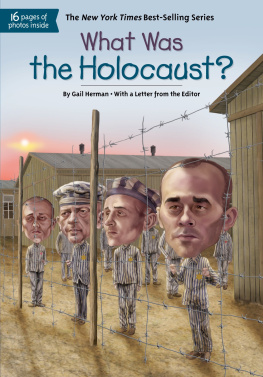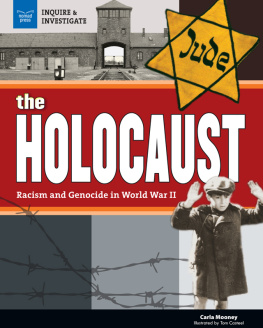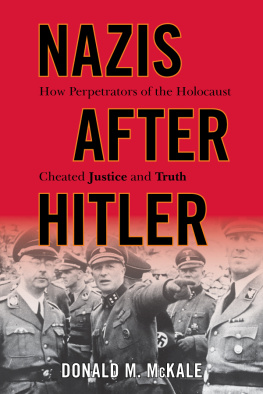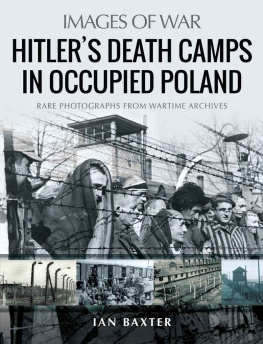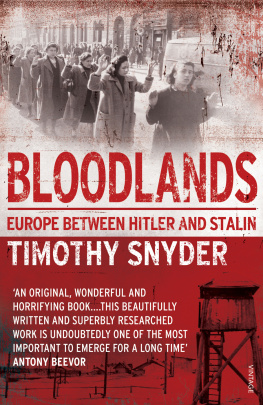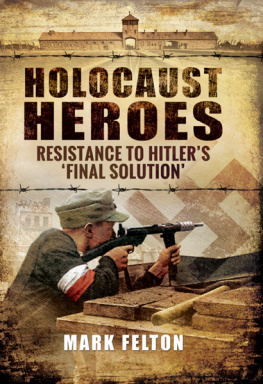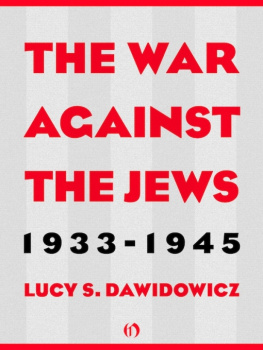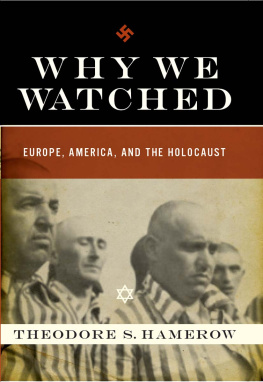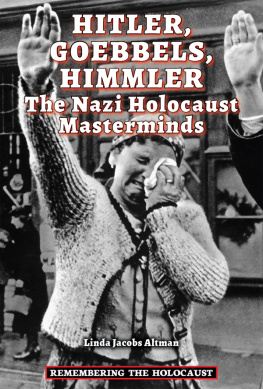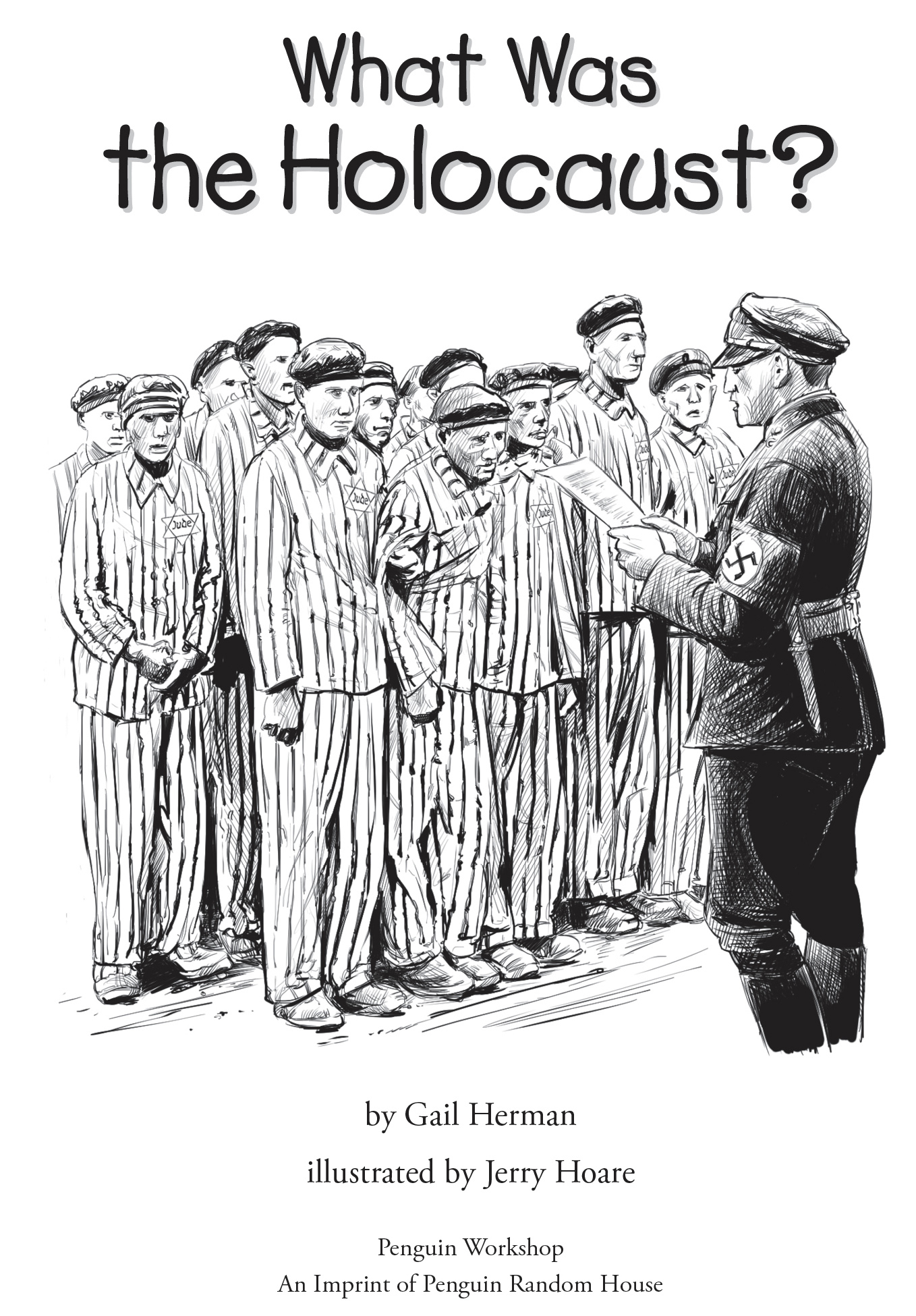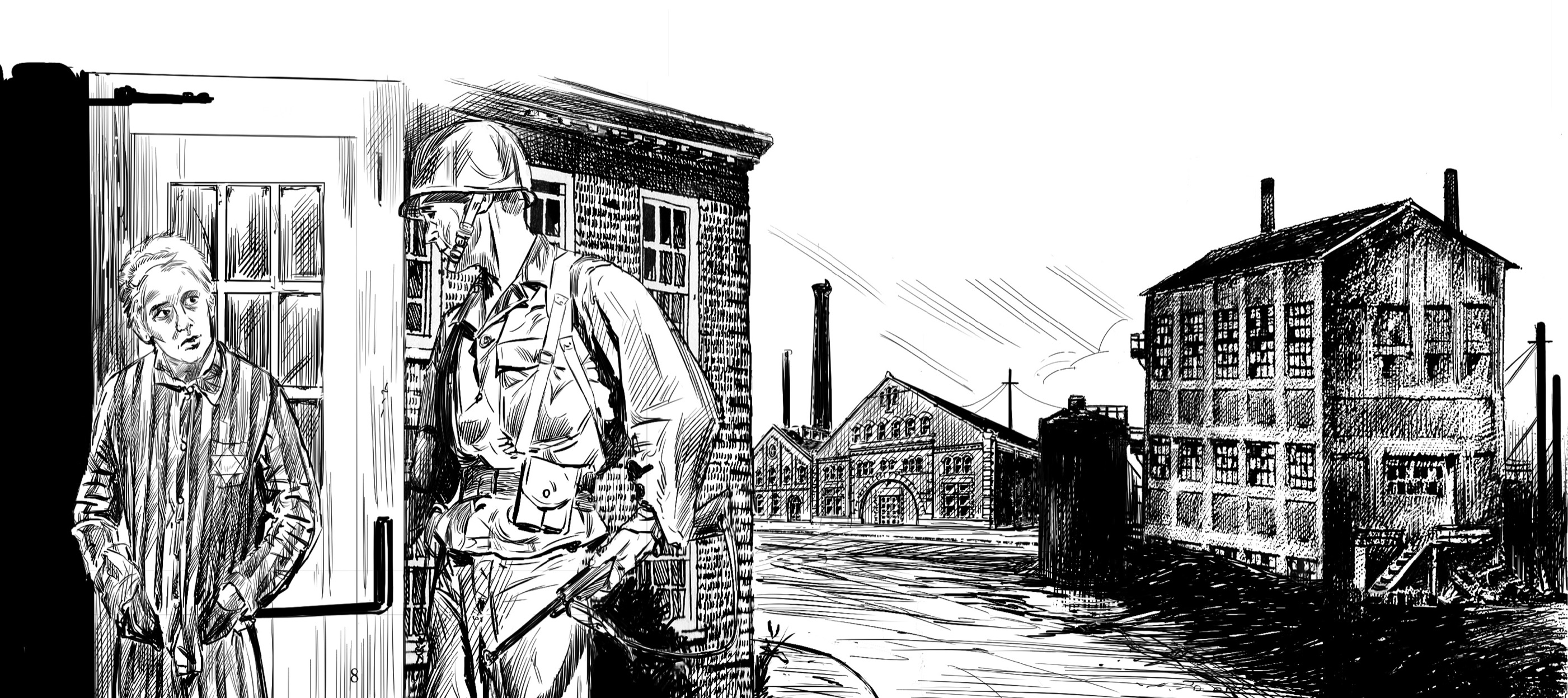To Our Readers
This book is about an event in history that is so terrible, it seems almost impossible to believe it actually happened. But it did. The Holocaust refers to the murder of twelve million people in Europe. Six million of them were Jewish. It didnt happen all that long agofrom 1939 to the middle of 1945.
After you finish reading this book, you will know who planned the Holocaust, where and when it took place, and how it was carried out. But one thing you wont learn is why it happened. Thats because there really is no way to explain something that is so purely evil.
For a long time we thought about whether or not to publish a book about the Holocaust. We wondered if the subject was too awful for young readers. But we decided it was such an important event that not including the Holocaust in the series would be wrong. The few survivors of the Holocaust are very old now. When they are no longer alive, it will be up to books to tell the painful story of what happened. Very likely you will have lots of questions after you finish reading this. We hope you turn to your family or your teachers to talk about them.

Jane OConnor, Editor
Over the past ten years, I have been teaching young people the important lessons of the Holocaust as well as educating teachers on methods to use to introduce this topic. I have searched for a book like What Was the Holocaust? but found nothing until now.
This book will help upper-elementary and early-middle-school-age students begin to understand the complexities of the topic. In a well thought out and meaningful way, the author delves into the rise of the Nazi Party, ghettos, concentration camps, resistance, and heroes.
I have found that so many students connect deeply to this story of destruction and survival, and yearn to know about it. What Was the Holocaust? fills that need; it is a fantastic source that will help shape a young persons understanding of this dark period in time.

Ilyse Shainbrown
M.A. Holocaust and Genocide Studies
Holocaust educator
For my parents, and the men and women of their generationGH
PENGUIN WORKSHOP
Penguin Young Readers Group
An Imprint of Penguin Random House LLC

If you purchased this book without a cover, you should be aware that this book is stolen property. It was reported as unsold and destroyed to the publisher, and neither the author nor the publisher has received any payment for this stripped book.
Penguin supports copyright. Copyright fuels creativity, encourages diverse voices, promotes free speech, and creates a vibrant culture. Thank you for buying an authorized edition of this book and for complying with copyright laws by not reproducing, scanning, or distributing any part of it in any form without permission. You are supporting writers and allowing Penguin to continue to publish books for every reader.
The publisher does not have any control over and does not assume any responsibility for author or third-party websites or their content.
Copyright 2018 by Penguin Random House LLC. All rights reserved. Published by Penguin Workshop, an imprint of Penguin Random House LLC, 345 Hudson Street, New York, New York 10014. PENGUIN and PENGUIN WORKSHOP are trademarks of Penguin Books Ltd. WHO HQ & Design is a registered trademark of Penguin Random House LLC.
Library of Congress Cataloging-in-Publication Data is available.
ISBN 9780451533906 (paperback)
ISBN 9780451533920 (library binding)
ISBN 9780451533913 (ebook)
Version_1
What Was the Holocaust?
May 1945: Volary, a small town in what is now the Czech Republic
Gerda Weissmann stood outside an old bicycle factory. She weighed sixty-five pounds. Her hair was white, although she was not even twenty-one.
Inside the empty building, dozens of women lay on straw. Most were sick. Many were dying. Like Gerda, they were all Jewish. For many years they had suffered under the rule of Nazi Germany.
For Gerda, the horror had begun six years earlier.
It was late summer. She was fifteen years old. And she had just come home from vacation. On September 1, 1939, the weather was glorious, the sky a bright blue. Suddenly, German airplanes blocked the sun. They roared over Gerdas home in Bielsko, Poland. Tanks rolled down the streets. The German army was invading Poland.
It was the start of World War II, which lasted in Europe until May of 1945.
Many local people waved Nazi flags. They cheered for their new leader, Adolf Hitler. They were glad Hitler had taken over Poland. Hitler hoped to take over all of Europe.
The Jews of Bielsko were not happy at all. They knew of the Nazis hatred for Jews.
Gerda and her family were told to leave their home so local German-Poles could move in. Gerdas garden was fenced off with a sign that read: No dogs or Jews allowed. They lived in a basement, with no water or electricity.
After a while, all Jews in Bielsko were rounded up. Trucks took them to different prison camps. Gerda was separated from her mother. She never saw her again. She never saw anybody else in her family again, either. Through the rest of the war, Gerda was moved from one concentration camp to another. She labored in Nazi-run factories. She hauled coal onto trains. By 1945, she was half-dead.
And yet Gerda was one of the more fortunate ones. She survived.
Six million Jews did not. They were killed by the Nazis in concentration camps. About six million other victims were also led to their deaths: gay people, the Roma, disabled people, and people from certain religious and political groups.
That day in 1945 at the factory, Gerda saw a car approach. Two menUnited States soldiersjumped out. One came over. He was big and strong. To Gerda, he looked like a god.
Does anybody here speak German or English? he asked in German.
I speak German, Gerda answered. Then she added, We are Jewish, you know.
So am I, the man said. His name was Kurt Klein. May I see the other ladies? he added. Then the man held the door for Gerda to go inside the factory. It was a simple, polite thing to do. But it made her feel human again.

